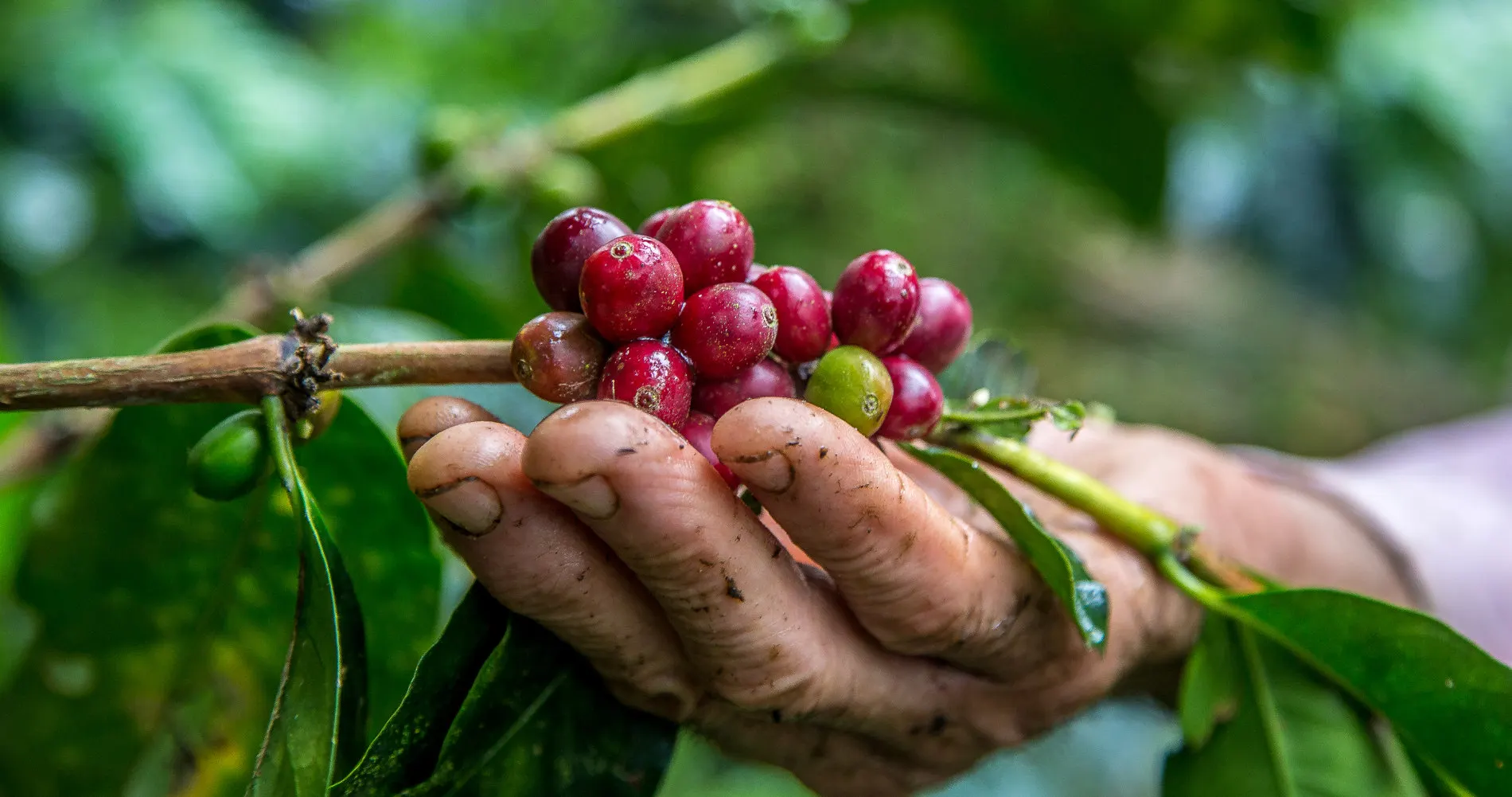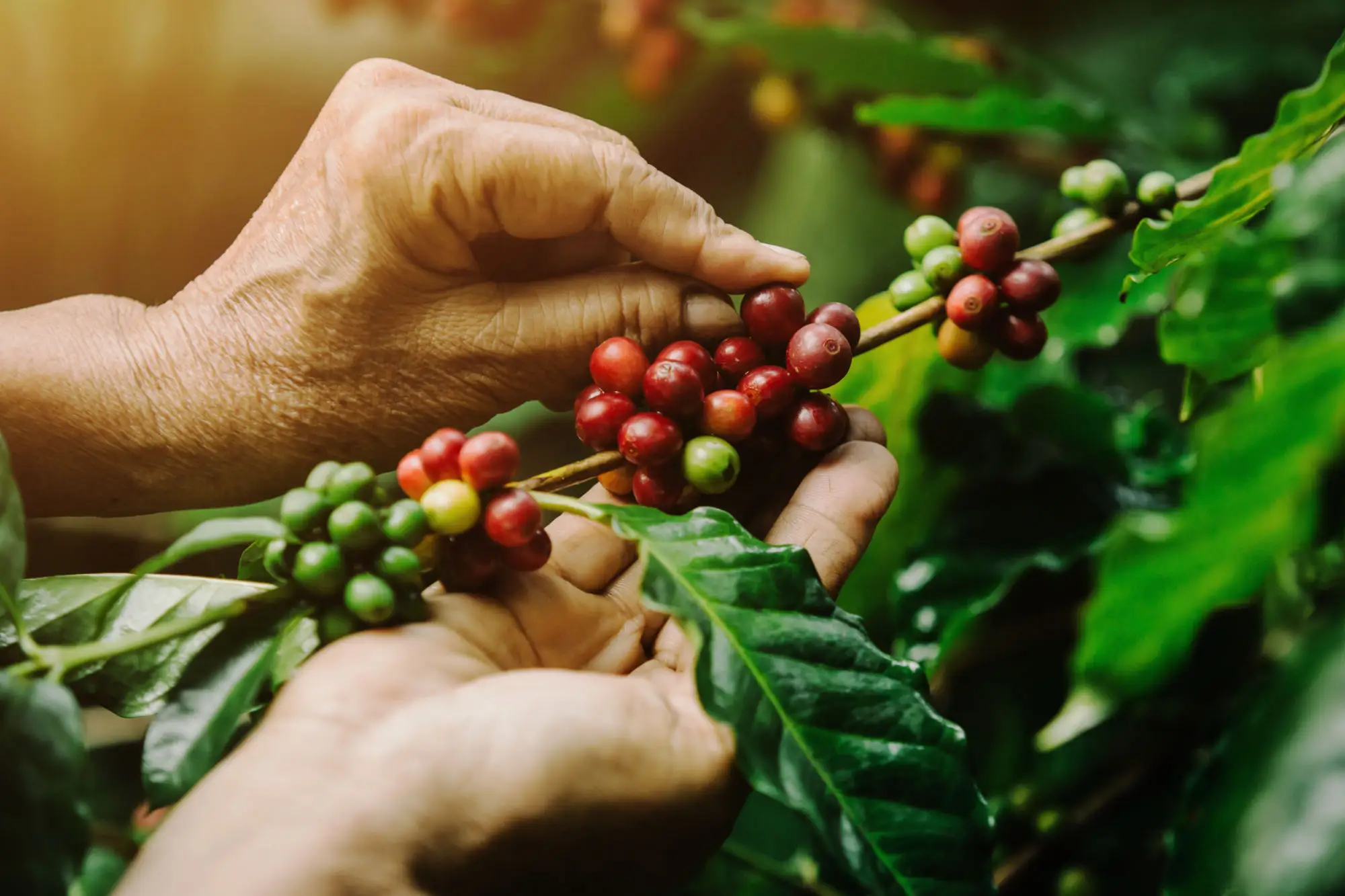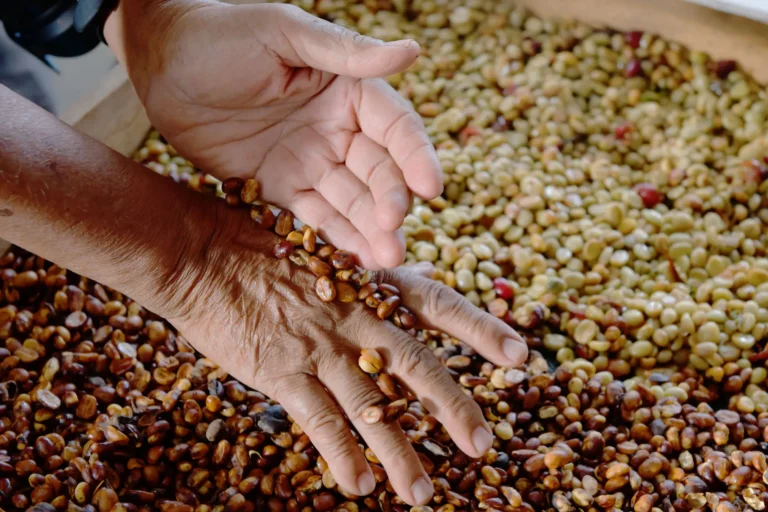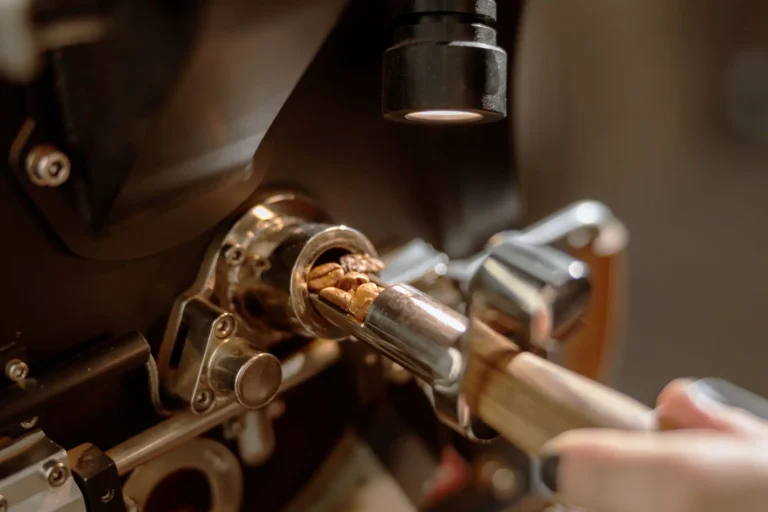DARMOWA DOSTAWA DLA ZAMÓWIEŃ POWYŻEJ 159ZŁ
Arabica, also known as the queen of coffee, is one of the world's most prized coffee varieties. Its subtle flavor, distinct aromas and exceptional variety make it a staple for coffee shops serving this delicious brew around the world. However, perhaps surprisingly, there are many different botanical varieties of Arabica coffee. Each of these varieties has its own unique flavor characteristics and is grown in different climatic conditions
The exact number of varieties that exist in the world is not known. To put this into perspective, the Jimma Agricultural Research Center in Ethiopia has collected and preserved some 7,067 coffee varieties from different growing areas. Breeders have so far identified some 140 species present around the world, while Ethiopia alone has released seven hybrid and 35 direct varieties (a total of 42 coffee varieties) by 2021 for different growing regions. This number will increase with the development of more productive varieties and the discovery of previously unknown ones.
Arabica Typica
Typica is the first commercial variety of Arabica and the most famous of the varieties derived from Typica. This tall variety of the Arabica species is derived from coffee brought to Java from Yemen. It is a variety with young leaves with brown tips, bearing large fruits and seeds. It is well adapted to the coldest climates and provides good quality coffee, especially in South and Central America, where it dominated most coffee plantations until the 1940s.
The taste of Typica coffee can vary depending on several factors, including the region in which it is grown, specific climatic conditions and the altitude of the coffee plantation. It is prized for its balanced and mild flavor. It maintains a harmonious balance between acidity, tartness and sweetness.
Arabica Bourbon
Bourbon is one of the best-known varieties of Arabica, famous for the excellent quality of its coffees growing at the highest altitudes of the volcanic slopes. The variety developed naturally on the island of Île Bourbon (now known as Réunion) from coffee brought to the island from Yemen by French missionaries in the early 18th century.
Bourbon is known for its rich and sweet flavor. It tends to offer a smooth, full body and balanced sweetness. Bourbon coffees often exhibit notes of fruit, such as apples, cherries or citrus. In addition, there may be subtle sweet notes such as caramel, vanilla or candied sugar.
Gesha (or Geisha)
Arabica coffee, including the Geisha variety, was imported from Ethiopia to Latin America in the 1920s. However, at first it was not particularly popular or widely cultivated. It wasn't until the 1960s that the Geisha variety rose to prominence. A Panamanian farmer, Don Pachi, planted Geisha coffee plants on his farm in Boquete, Panama. It was here that Geisha's unique flavor characteristics, such as floral aromas and subtle acidity, began to be appreciated.
Geisha from Panama quickly gained a reputation as one of the highest quality coffees in the world. Its unique flavor and aroma attracted the attention of coffee lovers, and auctions of Geisha beans reached record prices.
One of the distinctive flavor characteristics of Arabica Geisha coffee are distinct floral notes, often compared to the scent of jasmine or bergamot. These floral accents lend subtlety and elegance to the coffee.
Odmiana kawy SL28 to jedna z odmian arabiki, która ma ciekawą historię pochodzenia. Nazwa „SL28” pochodzi od kodu przydzielonego przez Kenijski Instytut Badawczy ds. Kawy (Coffee Research Foundation) tej konkretnej odmianie. Odmiana SL28 została stworzona w latach 30. XX wieku przez Kenijski Instytut Badawczy ds. Kawy, aby rozwijać kawy odporne na choroby kawowców. Rdza kawy to groźna choroba, która atakuje liście i owoce kawowca. Uprawa kawy odpornej na te choroby była i nadal jest kluczowa dla przemysłu kawowego w Kenii.
SL28 often exhibits unique flavor notes such as fruits, citrus, berries and black currants. These fruity notes give the coffee freshness and sweetness.
The SL28 variety is known for its intense and pleasant aroma. The aroma of SL28 coffee can be floral, fruity and sweet. Roasted with a light roast profile, it boasts a pronounced but pleasant acidity that lingers in the mouth for a long time.
Arabica SL34
The SL34 coffee variety, like SL28, has its roots in Kenya and is the result of research and breeding by the Coffee Research Foundation of Kenya. The SL34 variety was bred by crossing two other coffee varieties, French Mission and Mibirizi. French Mission was a popular variety in Kenya, but it was susceptible to disease, so the researchers sought to create a more resistant variety that also had good flavor characteristics. Ultimately, the SL34 variety was selected as the result of this research.
Like SL28, it has its own unique flavor characteristics that have made it popular in the coffee world. It is known for its full body, which means it has a distinct texture on the palate. This makes the coffee substantive and dense. It often exhibits moderate acidity that is well balanced and not too intense. This makes this variety the choice of coffee connoisseurs around the world who appreciate flavor variety and always want to discover new shades of coffee.
Arabica Catuai
The Catuai coffee variety is one of the newer arabica varieties that was created to combine the characteristics of two popular coffee varieties: Caturra and Mundo Novo. It was developed in Brazil, one of the largest coffee producers in the world. The Brazilian Coffee Research Institute (Instituto Agronômico de Campinas - IAC) has been working on breeding and crossbreeding different coffee varieties to produce coffees more suited to Brazilian growing conditions.
Catuai often exhibit moderate acidity. It is usually not as bright or pronounced as other varieties such as SL28 or SL34, which can be appreciated by those who prefer a milder flavor profile. Catuai is a staple Brazilian coffee that is popular for its sweet character and high-quality cup flavor profile. It is reliably described as "very good," just as its name suggests. If you are looking for unique bittersweet notes of chocolate, almond, sugar and spice, Catuai is the coffee for you.
Pacamara
The Pacamara coffee variety is an interesting hybrid created by crossing two other well-known coffee varieties: Pacas and Maragogipe. It was developed in El Salvador, in the 1950s. The country is known for breeding different coffee varieties and experimenting with flavor characteristics and disease resistance.
Pacas is a modification of Bourbon coffee that has a lower height, making it easier to pick. Maragogipe, on the other hand, is known for its very large coffee beans, which gives it a unique flavor profile.
Pacamara is characterized by a complex and intense flavor profile. In its taste we can find distinct notes such as fruit, chocolate, caramel, nuts, as well as subtle acidity. The taste of this coffee, depending on the degree of roasting, can be both sweet and fruity, as well as pronounced.

Maragogipe (read: Maragohipe)
The Maragogipe coffee variety, is also known as the "Elephant Bean" because of the size of its beans. It was discovered in Brazil, in a region called Maragogipe, hence its name. The flavor of Maragogipe beans depends on the growing region more than other coffee varieties.
The flavors of Maragogipe are extremely delicate, so a light to medium roast is ideal to enhance them rather than overwhelm them. Typically, Maragogipe is naturally a very sweet variety and has low acidity. It also happens to have floral aromas, as well as notes of honey and sometimes spice.
Caturra
The Caturra variety was discovered in Colombia in the 1930s. It is a natural mutation of the Bourbon coffee variety. One of the distinctive features of the Caturra variety is its small plant height compared to other coffee varieties, such as Typica. This makes it more resistant to wind and rain damage, which makes it attractive to coffee growers.
Often referred to as one of the most complex in terms of flavor. These varieties share a common flavor profile - mild with a hint of fruity sweetness and a sour aftertaste. However, because these varieties are grown in different parts of the world, each with different weather conditions and altitudes, the complementary flavors vary. The flavor profile of Caturra coffee can also include notes such as caramel, chocolate, nuts, almonds and citrus fruits.
Blue Mountain Arabica
The Blue Mountain variety is grown in an area known as the Blue Mountains, which lie in Jamaica's Caribbean region. This unique location, with its high mountains and favorable climate, creates excellent conditions for growing coffee. Blue Mountains Hills is under a quality certification system to maintain high production standards.
Blue Mountain Arabica has a smooth and mild flavor profile and a bright and lively, but mild acidity. It is known for its distinctive aroma, which is commonly described as fruity and floral. The coffee's aroma depends on several factors, including growing conditions, processing method and roasting level.
Arabica Java
Java, is an arabica coffee variety grown on the Indonesian island of Java. It is one of the country's major coffee growing areas. The island of Java offers a variety of climatic and soil conditions, which affects the taste of the coffee.
This variety is known for its low acidity compared to other coffee varieties. This has to do with the climatic conditions in Java. The flavor profile can include various notes such as dark chocolate, nuts and spices defining Java as a variety with a heavier character.
Heirloom
Heirloom is a specific way to describe Arabica coffee plants, the variety of which can be difficult to determine. The term is particularly often used for Ethiopian coffees, of which there are thousands of varieties, and a given producer's production can cover a wide range.
Ethiopian varieties described by the Heirloom name tend to have a floral and fruity profile, but their specific characteristics vary widely from region to region. Varieties from the Guji region tend to be very fruity coffees, with notes of berries and jam, while those from Sidamo are more floral, with strong apricot aromas.
As you can easily see, there is something for everyone in coffee! You can find many of these varieties in our shop! We encourage you to try and discover these very different taste sensations.



